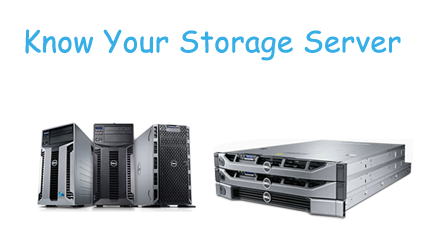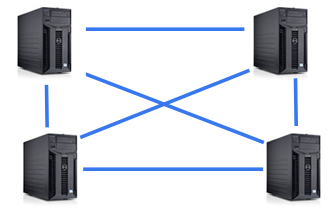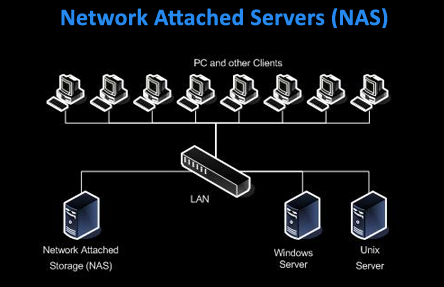
Storage servers comprise a pretty broad and diverse group of products, able to serve the needs of home users as well as business customers of all types. Their continually lowering prices have allowed them to become more widely adopted in both home and enterprise environments, helping to aid universal data access for both types of customers. Even as their popularity and affordability increases, however, many of the quirks and unique features tied to storage servers remain unknown. For those new to the storage server concept, below are ten things to know when purchasing and deploying a central storage server in either a home or business environment.
1. Servers can be locally or Publicly Networked.

storage-networks
The term “storage server” typically applies to those central storage devices that are available to users of a local network. For instance, these servers would be locally accessible within a connected office environment, or deployed in a home so that multiple users can access files or entertainment. In a world full of enterprise solutions and one that is increasingly moving to the cloud, however, many storage server operating systems have begun supporting access to server files and information from outside the local area network. From Windows and Mac server environments to open source Linux alternatives, increasing numbers of server operating systems are allowing secure, password-controlled access to the server’s files from home computers, mobile devices, and even tablets.
2. Just because it’s a Storage Server Doesn’t Mean it has to Use Linux.

Storage Server (Linux)
The companies that develop Linux-based operating systems have been pretty successful in their marketing push. Because of this success many consumers believe that all servers must run an open source operating system. They’ve conveyed the faster development cycle, the rapid feature development process, the absence of major security flaws, and the foolproof reliability. Those things might be true, but they’re not exclusive to Linux. Especially as storage servers become more prominent in homes, it’s important to understand that these hardware installations can run major operating systems from Microsoft and Apple. Both companies produce server versions of their flagship operating systems, released in the form of Windows Server and Mac OS X Server. Both operating systems perform the same functions — and usually more — than their open source counterparts.
3. There’s a Microsoft Windows Server “Flavor” for All Storage Server Setups.
Windows server
While Mac OS X Server comes in just one variety for all server installations, Microsoft has designed several versions of its server operating system to accommodate various diverse needs. The company’s primary product is its Microsoft Windows Server 2011 product, but several niche markets are served by other varieties. The most relevant of these is Microsoft Windows Home Server, a version of the operating system that is specifically designed to enable home file sharing and media server capabilities. The company’s MultiPoint Server operating system is also important, allowing multiple users to operate on the same machine at the same time simultaneously.
4. Servers Can Take Care of Themselves.
Windows, Mac, and Linux server environments all include tools that allow the server to take care of itself over the long term. They’ll defragment their own files, optimize their own settings, and intelligently allocate RAM to deliver the best overall performance to the end user. That’s something that most consumer operating systems still don’t do, despite all of their usability advances over the past decade.
5. Network Attached Servers (NAS) Can Increase Business Productivity.

Network-Attached-Servers-(NAS)
When a storage server is connected to the wider internet, allowing remote access to its files via a secure login, it becomes known as a network attached storage device. These publicly available servers are the key to deploying telecommuting services and videoconferencing tools in enterprise environments that will increase both communication and productivity among employees. When the office uses a storage server to expand beyond its own walls, everyone benefits.
6. Storage Servers are Designed to be Upgraded.
One thing most buyers notice when they purchase a new storage server is that the device is pretty big — but isn’t filled with a large number of hard disk drives or RAM chips. That’s because these devices are designed to be inherently scalable, promoting upgrades over time that will expand hard disk storage space and available RAM. Best of all, storage servers are designed to be plug-and-play, with a distinct lack of drivers needed to enhance space and functionality.
7. Crashes Are Extensively Logged for Easy Repair.
Server operating systems are designed somewhat differently from their consumer counterparts. Their goal is not only to provide great functionality, but also to give access to extensive logs and crash reports in the event of an error. Those reports are then stored in a database that can be easily searched or sorted, so administrators can look for patterns with the server’s problems and fix them in one fell swoop.
8. Designed to be Secure in all Scenarios.
Server operating systems available from Microsoft, Apple, and Linux companies, are all well-endowed with security tools. The best of these is a commitment to tough encryption that will apply to all files and settings stored on the server’s built-in hard disk drives. That will prevent even the most malicious of users from stealing and compromising company files or personal data.
9. Partitions Allow Network Servers to Serve Multiple Purposes.
Lets face it: A network server is really just one piece of a highly networked environment that often needs to meet many needs. Businesses typically require centralized file storage, cloud-based data access, and email server features. Those things can all be accomplished with a network-connected piece of server hardware via partitions made within the server operating system. This is a great way to run products like Windows Server and Microsoft Exchange Server simultaneously, using the same hardware and saving on overall costs.
10. Server Operating Systems are Generally Released to Coincide with Consumer Releases.
When Microsoft releases a new version of its consumer-facing operating system, it generally follows that release quickly with a new Windows Server. The same is true of Apple’s Mac OS X operating systems and most Linux releases. That means feature sets will always line up between the two variants, eliminating confusion for office employees and home users.
A Great Way to Centralize Data and Embrace Convenience.
Network-connected storage servers are a great way to save space on personal computers and centralize files and data on a remote piece of hardware. Their commitment to self-maintenance and deep security will add peace of mind, while their easy operation will free IT professionals and business owners to focus on more important tasks.
Contributed by:
David Malmborg works with Dell. When he isn’t working he enjoys hiking, spending time with his family and writing about technology. Currently David is learning more about the value of Converged Infrastructure and recommends following this link to learn more.
